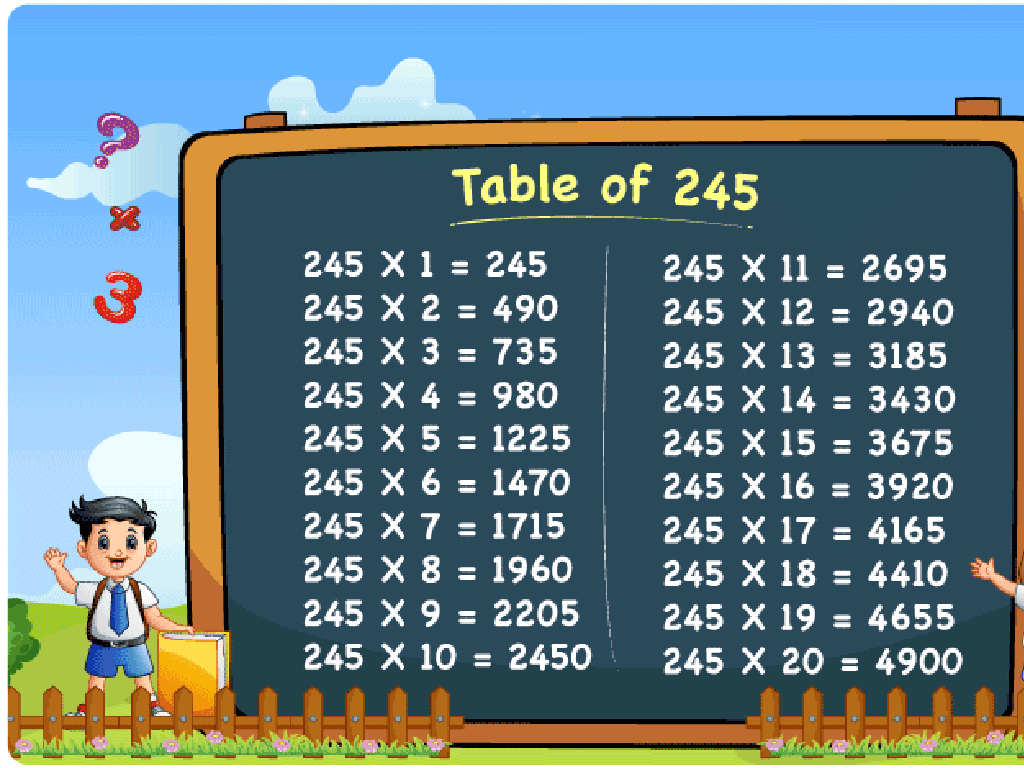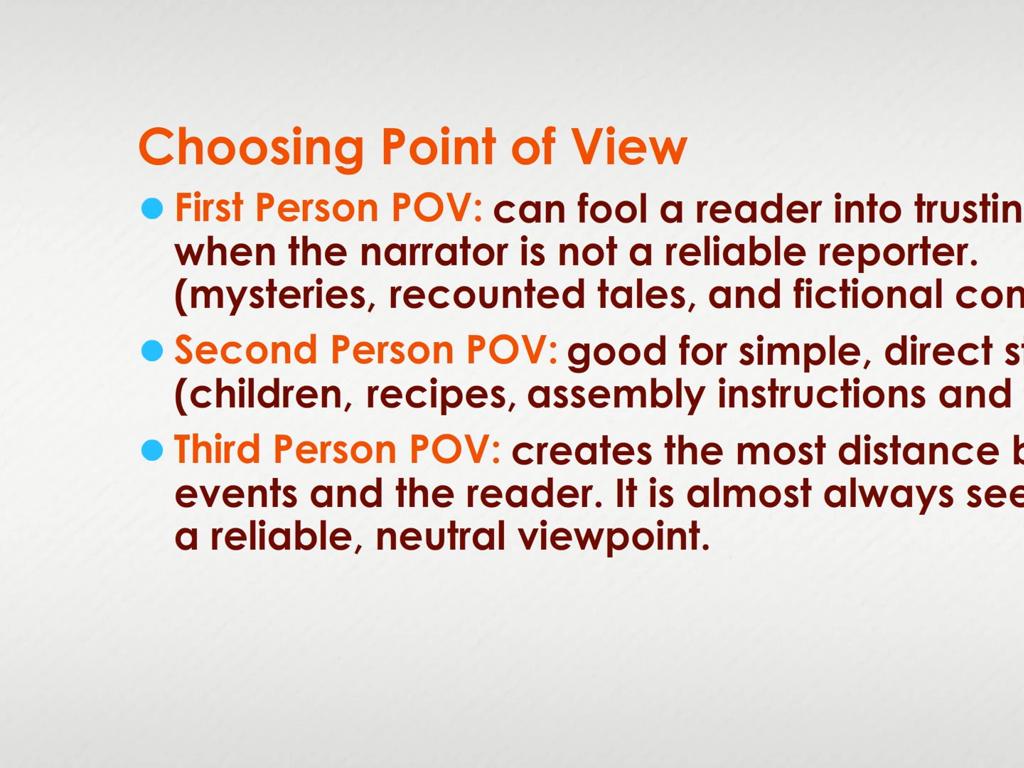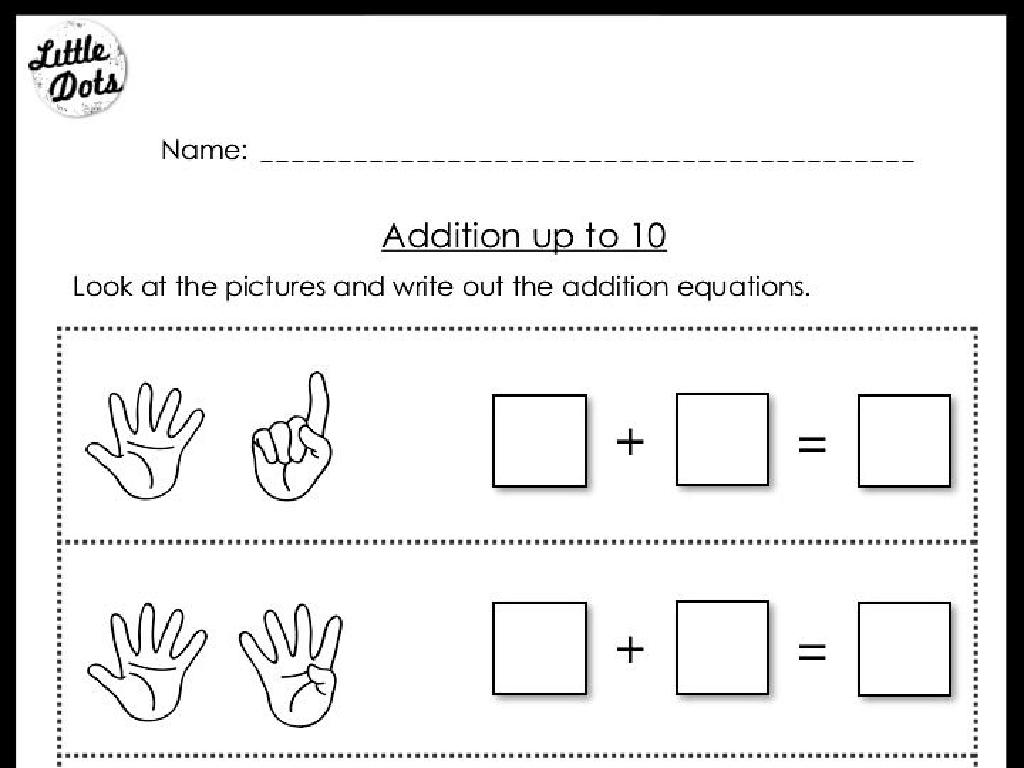Write And Solve Equations Using Angle Relationships
Subject: Math
Grade: Eighth grade
Topic: Lines And Angles
Please LOG IN to download the presentation. Access is available to registered users only.
View More Content
Exploring Angle Relationships
– Understanding angles in geometry
– Writing equations with angle relationships
– Learn to express angles’ relationships algebraically
– Exploring angle types
– Complementary, supplementary, vertical, adjacent angles
– Solving angle equations
– Use algebra to find unknown angles
|
This slide introduces the concept of angle relationships, which is fundamental in geometry. Students will learn how to translate the relationships between angles into algebraic equations, which can then be solved to find unknown angle measures. Emphasize the importance of understanding different types of angles: complementary angles sum up to 90 degrees, supplementary angles sum up to 180 degrees, vertical angles are opposite each other and are equal, and adjacent angles share a common ray. Provide examples for each type and demonstrate how to set up and solve equations based on these relationships. Encourage students to practice with various angle pairs to solidify their understanding.
Complementary Angles
– Definition of complementary angles
– Two angles are complementary if their sum is 90 degrees.
– Complementary angles equation
– If one angle is x, the complementary angle is 90 – x.
– Example of complementary angles
– For example, if one angle is 30 degrees, the other is 60 degrees.
– Writing equations for pairs
– Let’s find the value of x when two angles are complementary.
|
This slide introduces the concept of complementary angles, which are two angles that add up to 90 degrees. It’s crucial to explain that the term ‘complementary’ refers to the specific relationship between two angles whose measures sum to a right angle. Provide an example to illustrate this concept, such as if one angle measures x degrees, then the other angle measures 90 – x degrees. Encourage students to write their own equations for complementary angles and solve for the unknown angle. This exercise will help them understand how to apply algebra to geometry. In the next class, we can review their equations and solutions to ensure comprehension.
Supplementary Angles
– Definition of supplementary angles
– Supplementary angles sum to 180°
– Example: one angle is x, other is 180 – x
– If angle A is 70°, angle B is 180° – 70° = 110°
– Practice writing equations
– Find the measure of angle B if angle A is x degrees
|
This slide introduces the concept of supplementary angles, which are two angles that add up to 180 degrees. It’s crucial for students to understand that no matter the size of one angle, the two will always sum to 180 degrees. Provide an example where one angle is known, and the other is represented as 180 minus the known angle. For the class activity, students will practice writing equations for supplementary angles. For instance, if one angle is x, the equation to find the other angle would be 180 – x = the measure of the second angle. Encourage students to come up with different values for x and solve for the supplementary angle. This exercise will help solidify their understanding of angle relationships and prepare them for solving more complex problems involving supplementary angles.
Understanding Vertical Angles
– Definition of vertical angles
– Formed when two lines intersect, opposite each other
– Vertical angles are congruent
– If two angles are vertical, they have equal measures
– Writing equations for vertical angles
– Set the measures of vertical angles equal to each other
– Solving vertical angle equations
– Use algebra to find the value of unknown angle measures
|
This slide introduces the concept of vertical angles, which are angles opposite each other when two lines intersect. Emphasize that vertical angles are always equal, which is a key property that allows us to write equations to express their equality. Provide examples of how to set up and solve these equations, such as if two intersecting lines create vertical angles of x and 50 degrees, we can write the equation x = 50 to find the measure of the unknown angle. Encourage students to practice writing and solving these equations with various angle measures to reinforce their understanding of the relationship between vertical angles.
Understanding Adjacent Angles
– Adjacent angles: common side & vertex
– Adjacent angles don’t sum to a set value
– Identify adjacent angles in diagrams
– Look for angles with a shared side and corner point in various shapes and figures.
– Solve equations with adjacent angles
– Use algebra to find unknown adjacent angle measures.
|
This slide introduces the concept of adjacent angles, which are angles that share a common side and a common vertex. It’s crucial to note that while they are next to each other, they do not have a predetermined sum like complementary or supplementary angles. Students will practice identifying adjacent angles in different diagrams, which will help them visualize and understand the concept better. Additionally, they will learn to write and solve equations that involve adjacent angles, applying their knowledge of algebra to find unknown angle measures. Encourage students to think about real-world examples of adjacent angles, such as the hands of a clock or the corners of a book.
Solving Angle Equations
– Combine like terms in equations
– Add or subtract terms with the same variable to simplify.
– Use inverse operations to find angles
– To isolate the variable, do the opposite operation.
– Substitute to check your solution
– Ensure the angle measure fits the original equation.
– Practice with example equations
|
This slide is aimed at teaching students the systematic approach to solving equations that involve angle relationships. Start by combining like terms, which means adding or subtracting terms with the same variable to simplify the equation. Next, use inverse operations such as addition, subtraction, multiplication, or division to isolate the variable and solve for the unknown angle. It’s crucial to check the solution by substituting the angle measure back into the original equation to verify its correctness. Encourage students to practice with example equations to solidify their understanding. Provide several practice problems that involve different angle relationships, such as complementary, supplementary, and vertical angles.
Class Activity: Angle Hunt
– Find complementary angles
– Two angles adding up to 90°
– Find supplementary angles
– Two angles adding up to 180°
– Find vertical angles
– Angles opposite each other when two lines cross
– Write and solve equations
– Use angle relationships to form equations and solve
|
This interactive class activity is designed to help students apply their knowledge of angle relationships in a practical setting. Students will search for real-world examples of complementary, supplementary, and vertical angles within the classroom. Once identified, they should write equations representing these relationships, such as x + y = 90 for complementary angles. After writing the equations, students will solve for the unknown angles and verify their solutions with a partner. This exercise reinforces the concept of angle relationships and provides practice in writing and solving equations. Possible activities include finding angles in window panes, door frames, bookshelves, or any other classroom objects that may form these angles. Encourage students to assist each other and discuss their findings to enhance collaborative learning.
Homework: Angle Relationships Review
– Review learned angle relationships
– Complete the angle equations worksheet
– Practice applying rules to find missing angles
– Check your solutions carefully
– Ensure each step in your calculations is correct
– Summary of today’s lesson
|
As a summary and homework assignment, students are tasked with reviewing the angle relationships covered in class, such as complementary, supplementary, vertical, and adjacent angles. They must complete a worksheet that provides practice on writing and solving equations based on these relationships. Emphasize the importance of double-checking their work to ensure accuracy. The summary should reinforce the key concepts and methods discussed in class, providing a solid foundation for students to approach their homework with confidence. For the next class, be prepared to discuss common challenges or errors that may arise in the worksheet and how to overcome them.






